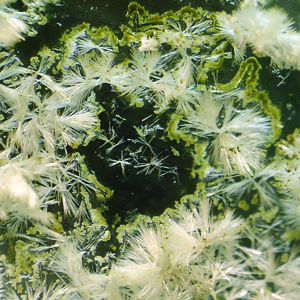 MEDIA ROOTS — Salvia divinorum is one of the most fascinating and mysterious psychedelic drugs on the planet. Equally as ‘powerful’ as DMT, with a peak duration of less than ten minutes, the drug can create a sense of timelessness where people may feel as if they’ve lived an eternity in another universe. Its ‘abuse potential’ is low since the experience for most people can be jarring and disorienting. For now, it is still legal in most parts of the United States. Almost all other ingestion methods of Salvia, besides smoking, have led to little anecdotal conclusions. People have had success making pure grain alcohol tinctures, which are very uncomfortable for the user to hold in the mouth.
MEDIA ROOTS — Salvia divinorum is one of the most fascinating and mysterious psychedelic drugs on the planet. Equally as ‘powerful’ as DMT, with a peak duration of less than ten minutes, the drug can create a sense of timelessness where people may feel as if they’ve lived an eternity in another universe. Its ‘abuse potential’ is low since the experience for most people can be jarring and disorienting. For now, it is still legal in most parts of the United States. Almost all other ingestion methods of Salvia, besides smoking, have led to little anecdotal conclusions. People have had success making pure grain alcohol tinctures, which are very uncomfortable for the user to hold in the mouth.
The active ingredient in Salvia, salvinorin A, which binds to the kappa Opioid receptor, until now has been a mystery to science. At the present time, pharmaceutical companies are most likely looking into the possibility of untapped knowledge in the world of the new frontier of psychedelic chemicals such as Salvia, which we know have already produced successful results.
Robbie Martin
***
TRI-CITY PSYCHOLOGY — At the molecular level, drugs like salvinorin A (the active ingredient of the hallucinogenic plant Salvia divinorum) work by activating specific proteins, known as receptors, in the brain and body.
Salvinorin A, the most potent naturally occurring hallucinogen, is unusual in that it interacts with only one receptor in the human brain—the kappa opioid receptor (KOR). Scientists know of four distinct types of opioid receptors, but until now the structure of the ‘salvia receptor’, and the details about how salvinorin A and other drugs interact with it, was a mystery.
In a research paper published March 21 in the journal Nature, scientists from the University of North Carolina at Chapel Hill, Scripps Research Foundation, and two other institutions revealed the first-ever glimpse of the complete structure of the KOR. The finding could accelerate the development of new drugs to treat addiction, depression, anxiety, chronic pain, and many other conditions.
“Once we see the structure of the receptor, it becomes easier for us to develop drugs that target the receptor in ways that might be beneficial for medical therapy,” says Bryan Roth, professor of pharmacology at UNC and one of the paper’s authors. “Drugs that block the receptor are potentially useful for treating a number of serious illnesses including chronic pain, cocaine addiction, and other diseases.”
Read more about Hallucinogenic Plant Targets Pain Receptor.
© 2012 Tri-City Psychology Services, Inc.
***
Photo by Wikimedia Commons user Abalg










